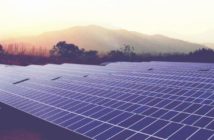Renewable Energy Focus

The first African initiative to generate hydrogen from water using renewable energy has been installed in Morocco. The completion of Africa’s first wind–hydrogen system is a collaboration between the Pure Energy® Centre in Scotland, Sahara Wind Inc, and Al Akhawayn University in Morocco.
The hydrogen system has been installed to enable the storage of excess wind energy, and demonstrate that the problem of wind intermittency and excess power generation can be resolved.
Sahara Wind coordinated the installation of a wind farm consisting of three wind turbines atAl Akhawayn University in Ifrane, one Morocco’s leading universities. The installation of the wind turbines meant that green energy could be used around the university campus.
However, it was found that there were times when the wind turbines produced excess energy. For example, the wind turbines would continue to generate power at night. In this case, there would be very little load demand on the campus, hence the wind turbine needed to be shut down.
Therefore the Pure Energy Centre was commissioned to design and install a hydrogen energy storage system. The stored energy could then be reused at a later time, when no wind generation was available, through different hydrogen applications.
Pure Energy installed the hydrogen energy system, which consisted of an electrolyser to produce hydrogen from water, a hydrogen storage tank, and a fuel cell. The oxygen produced by the electrolyser is vented to the atmosphere, although it would be possible to store and use it in welding, hospitals etc.
‘We feel that coupling wind and hydrogen will play an important role in Africa’s future through a variety of applications involving the continent’s main industries,’ says Khalid Benhamou at Sahara Wind.
‘The applications are indeed numerous: they range from powering telecommunications networks and green mobility – to be developed in partnership with local telecom and automotive industries – and extend to water utilities and mine processing industries,’ continues Benhamou. ‘The latter would use hydrogen and other electrolysis byproducts such as chlorine as feedstock.’
This cutting-edge project has been driven by Sahara Wind with financial support from NATO under its Science for Peace and Security frameworks. This will lead to Moroccan engineers accessing state-of-the art energy storage technologies.
‘The wind and hydrogen systems will be used for training, teaching, and research,’ says Khalid Loudiyi from Al Akhawayn University. ‘Our aim is to strengthen our research portfolio and to develop a number of hydrogen applications, such as fuel cell vehicles, cooking, and even heating.’






